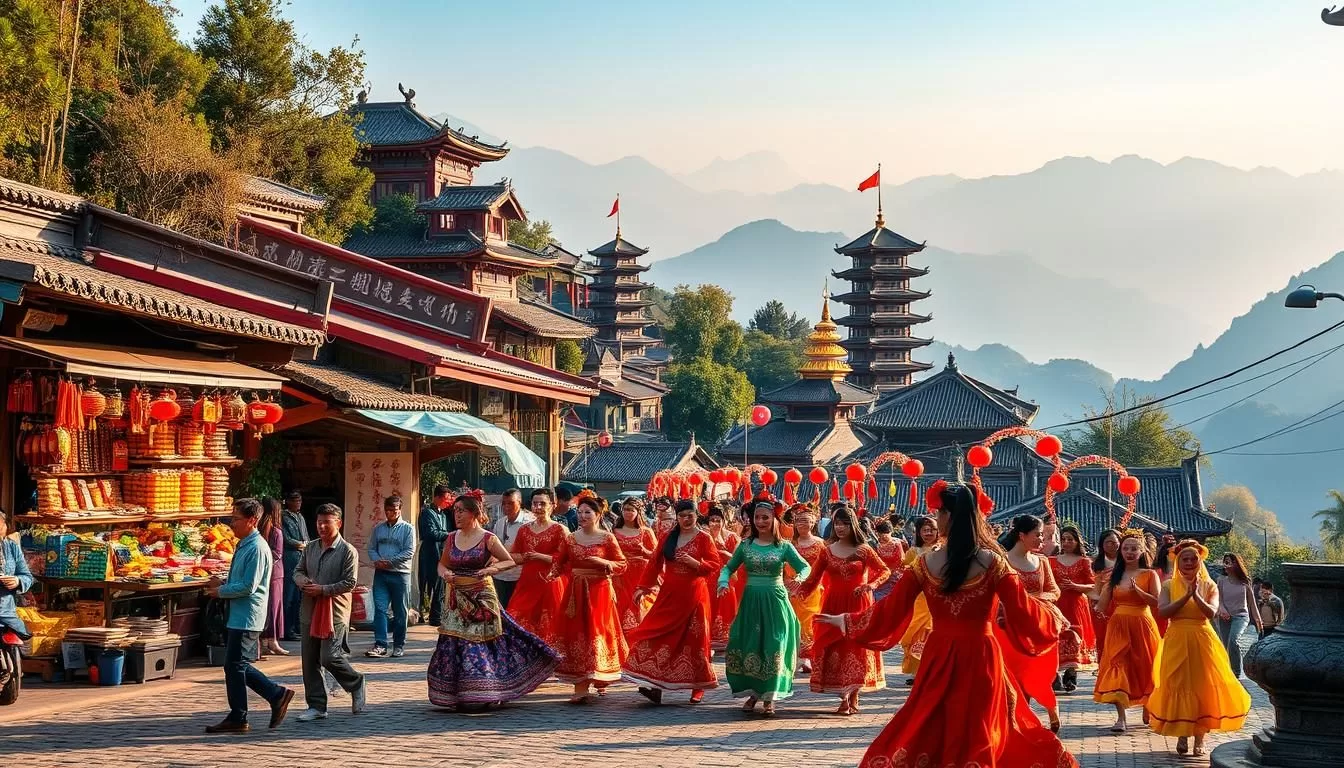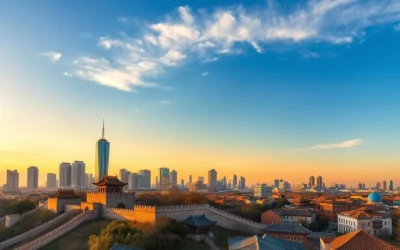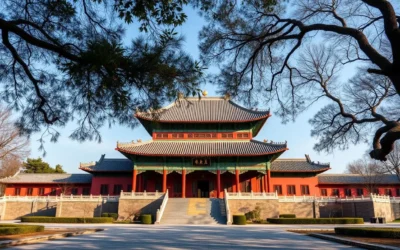✓ Accommodations ✓ Flights ✓ Rental Cars
If you’re looking for a destination that blends history, tradition, and vibrant energy, this region offers an unforgettable experience. Known for its year-round pleasant weather, it’s a place where ancient rituals meet modern celebrations. Festivals here are more than just events—they’re a reflection of community spirit and cultural pride.
From family reunions to international gatherings, these celebrations attract people from all walks of life. Each day of festivity is filled with unique traditions, from lantern fairs to folk performances. Whether you’re a first-time visitor or a seasoned traveler, you’ll find something to cherish during your time here.
For instance, the Mazu Festival, celebrated on lunar March 23, draws countless visitors each year, showcasing the region’s deep-rooted heritage. These events are not just about entertainment—they’re a window into the soul of the community. Get ready to explore a world where every person has a story to share and every moment is a celebration of life.
Introduction to Fujian’s Vibrant Festival Culture
Step into a cultural tapestry woven with centuries-old rituals and vibrant festivities. This region’s celebrations are deeply rooted in history, offering a unique blend of ancient traditions and modern practices. Every year, these events bring communities together, creating an atmosphere of joy and unity.
Setting the Scene for Your Visit
Throughout the year, festivals transform the region into a lively and colorful place. From bustling daytime parades to enchanting night performances, each event offers something special. The celebrations are a perfect mix of history and contemporary culture, making them a must-see for any visitor.
The Rich Heritage Behind the Celebrations
These festivals are more than just entertainment—they are a reflection of the region’s rich heritage. Many rituals date back centuries, preserving the essence of ancient traditions. For example, the Mazu Festival, celebrated on the 23rd day of the third lunar month, honors the sea goddess and attracts thousands of visitors. Such events provide a glimpse into the cultural soul of the community.
Whether you’re exploring during the day or experiencing the magic of the night, each festival offers an authentic and unforgettable experience. Don’t miss the chance to be part of these timeless celebrations.
Fujian Province, China: Top Festivals to Check Out When Visiting
Every holiday in this region is a vibrant display of tradition and community spirit. From ancient rituals to modern festivities, these events offer a unique glimpse into local life. Whether you’re savoring traditional food or exploring historic temple ceremonies, each celebration is a journey into the heart of culture.
Major holidays here are more than just dates on a calendar—they’re experiences that bring people together. Imagine bustling streets filled with the aroma of local delicacies, or the serene atmosphere of a centuries-old temple during a traditional ceremony. These moments create memories that last a lifetime.
One of the highlights is the role of food in these celebrations. From family feasts to street-side snacks, every dish tells a story. For example, during the Mid-Autumn Festival, mooncakes are a central part of the celebration, symbolizing unity and prosperity. Such traditions make each holiday a feast for the senses.
Ancient temples also play a key role in these festivities. They serve as the backdrop for ceremonies that honor heritage and spirituality. These sacred spaces come alive with music, dance, and rituals that have been passed down through generations.
Here’s a quick overview of what to expect in the upcoming sections:
| Festival | Highlights |
|---|---|
| Chinese New Year | Family reunions, traditional rituals, and festive foods |
| Lantern Festival | Illuminated streets and interactive lantern games |
| Qingming Festival | Tomb sweeping traditions and ancestral honors |
| Dragon Boat Festival | Exciting boat races and local delicacies |
Each festival offers a unique way to connect with the region’s rich heritage. Whether you’re drawn to the food, the temple ceremonies, or the community spirit, there’s something for everyone. Get ready to explore a world where every holiday is a celebration of life.
Chinese New Year Celebrations in Fujian
Celebrating the Chinese New Year brings communities together in a burst of color and culture. This festival, marking the start of the lunar year, is the most significant event in the region. Families gather, streets come alive, and traditions are honored in a way that reflects the heart of the community.
Family Reunions and Traditional Rituals
At the core of the celebration is the family reunion. Generations come together to share meals, exchange gifts, and honor ancestors. Age-old rituals, such as lighting incense and offering prayers, create a sense of continuity and respect for heritage.
Many of these gatherings take place in scenic areas, often near mountains, adding a serene backdrop to the festivities. The blend of nature and tradition makes the experience even more memorable.
Iconic Decorations and Festive Foods
Streets and homes are adorned with red lanterns, symbolizing luck and prosperity. Festive couplets, written in calligraphy, are displayed on doorways to bring good fortune. These decorations transform the region into a vibrant, joyful space.
Food plays a central role in the celebration. Traditional dishes like dumplings and fish are served, each carrying symbolic meaning. Special snacks, such as rice cakes, are enjoyed by all, adding to the festive atmosphere.
Cultural performances, including dragon and lion dances, are a highlight of the celebrations. These lively shows often take place in public squares, drawing crowds and adding to the communal spirit. The blend of tradition and entertainment makes the Chinese New Year a truly unforgettable experience.
Lantern Festival Magic in Fujian
Experience the enchanting glow of the Lantern Festival, where tradition meets creativity. This vibrant event marks the end of the New Year, transforming streets into a luminous wonderland. It’s a time when communities come together to celebrate with light, games, and cultural pride.
Illuminated Streets and Luminous Displays
As the sun sets, the streets come alive with thousands of lanterns, each crafted with intricate details. These displays are also known for their artistry, blending traditional designs with modern creativity. Walking through these illuminated paths feels like stepping into a magical world.
Local artisans spend months preparing these lanterns, ensuring every piece tells a story. The result is a breathtaking spectacle that captivates visitors of all ages.
Interactive Lantern Riddle Games
One of the highlights of the festival is the lantern riddle games. Groups gather around lanterns, solving riddles written on them. This activity fosters a sense of community and adds an interactive element to the celebration.
These games are not just fun—they’re a way to connect with cultural heritage. Many local tours include stops at these festivals, offering a deeper understanding of the region’s traditions.
From performances to parades, the Lantern Festival integrates activities for all age groups. It’s a celebration that brings people together, creating memories that last a lifetime.
Qingming Festival: Honoring Ancestors in Fujian
Discover the deep-rooted traditions of the Qingming Festival, a time for reflection and honoring ancestors. This ancient event, celebrated on April 4 or 5, has a history spanning over 2,000 years. It’s a moment when families come together to pay tribute to their loved ones, blending respect with meaningful customs.
Tomb Sweeping Traditions
At the heart of the festival is the practice of tomb sweeping. Families visit gravesites to clean and maintain them, ensuring they remain a place of reverence. This custom involves offering food, incense, and symbolic sacrifices, creating a connection between past and present.
Local members of the community often gather to perform these rites together. It’s a shared experience that strengthens familial bonds and honors heritage. The reflective nature of the festival emphasizes the importance of family ties and continuity.
Special offerings, such as seasonal foods, are prepared as a tribute. Dishes like green dumplings and Qingming glutinous rice are commonly enjoyed, adding a flavorful touch to the observance. These practices not only honor ancestors but also enrich the local trip experience, offering visitors a glimpse into the region’s cultural soul.
The Qingming Festival is more than a ritual—it’s a celebration of life, memory, and the enduring connections that bind us. Whether you’re participating in tomb sweeping or simply observing, it’s an opportunity to reflect on the past while embracing the present.
Dragon Boat Festival in Coastal Fujian
The Dragon Boat Festival is a thrilling blend of history, competition, and community spirit. Celebrated on the fifth day of the fifth lunar month, this event has over 2,000 years of history, making it one of the oldest traditional festivals. It’s a time when communities come together to honor cultural heritage and create unforgettable memories.
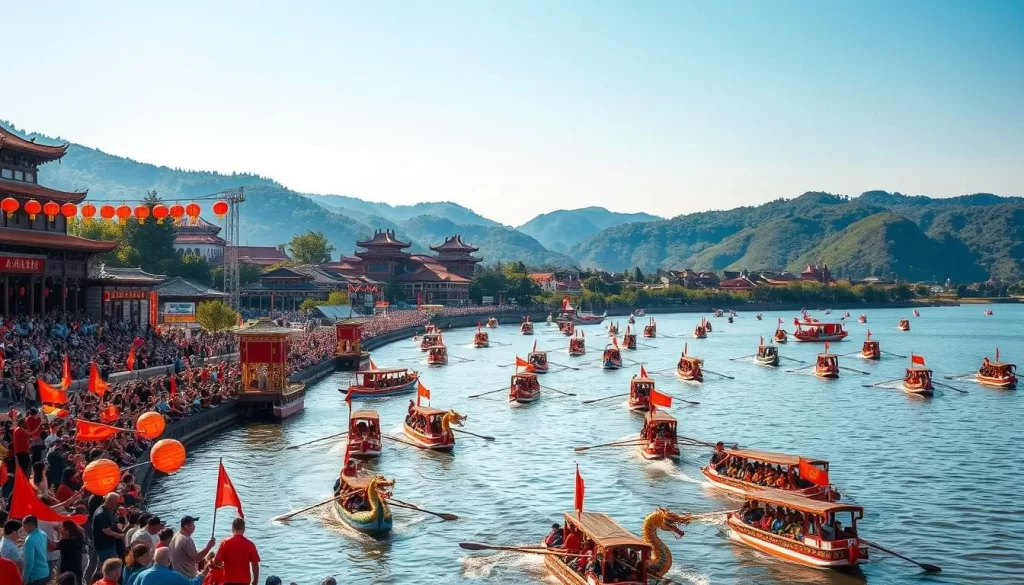
Exciting Boat Races and Water Rituals
At the heart of the festival are the exhilarating dragon boat races. Teams paddle in sync to the rhythm of gongs and drums, creating an electrifying atmosphere. These races are more than just a sport—they’re a tribute to the ancient patriot Qu Yuan, whose story is deeply woven into the festival’s history.
Before the races, coastal areas hold worship ceremonies to pray for safe voyages and peaceful lives during the typhoon season. These rituals add a spiritual dimension to the event, connecting participants to their cultural heritage.
Savoring Zongzi and Local Delicacies
No festival is complete without its culinary traditions. Zongzi, sticky rice dumplings wrapped in bamboo leaves, are a staple of the Dragon Boat Festival. These treats symbolize unity and are shared among families and friends, adding a flavorful touch to the celebration.
Local delicacies also play a significant role, offering visitors a chance to taste the region’s unique flavors. From duck catching contests to herbal bathing practices, every tradition reflects the festival’s rich history and communal spirit.
Whether you’re cheering on the boat races or savoring zongzi, the Dragon Boat Festival is an immersive experience that celebrates cultural heritage and brings people together. It’s a must-see event for any visitor looking to connect with local traditions.
Double Seventh Festival: Fujian’s Romantic Traditions
Romance takes center stage during the Double Seventh Festival, a celebration steeped in ancient lore. Known as Qixi, this event is deeply rooted in the legend of Zhi Nu and Niu Lang, a tale of love that transcends time and space. Every year, this festival brings communities together to honor love, family, and tradition.
The Legend of Zhi Nu and Niu Lang
The story of Zhi Nu, a celestial weaver, and Niu Lang, a humble cowherd, is at the heart of this festival. Their love was so profound that it moved the heavens, allowing them to meet once a year on the seventh day of the seventh lunar month. This tale inspires the romantic customs observed today.
In Fujian Province, the legend influences everything from decorations to activities. Families gather to celebrate, often sharing meals and stories that keep the tradition alive. Couples exchange gifts, and even groups of friends come together to enjoy the festivities.
Considered the Chinese equivalent of Valentine’s Day, the Double Seventh Festival is a time to cherish relationships. Festive activities include reciting traditional poems and enjoying themed performances. These events highlight the emotional and cultural depth of the celebration.
One of the most cherished aspects is the emphasis on family. Whether it’s parents sharing the legend with their children or couples renewing their vows, the festival strengthens bonds. It’s a reminder that love, in all its forms, is worth celebrating.
From historical rituals to modern interpretations, the Double Seventh Festival is a testament to the enduring power of love. Its romantic customs and communal spirit make it a must-experience event in Fujian Province.
Mid-Autumn Festival Splendor in Fujian
The Mid-Autumn Festival lights up the night with traditions that unite families and honor heritage. Celebrated on the 15th day of the 8th lunar month, this event is a time for togetherness, reflection, and gratitude. Families gather in their hometowns, creating a sense of warmth and belonging that defines the festival.
Mooncake Feasts and Reunion Dinners
At the heart of the celebration are mooncakes, round pastries symbolizing unity and prosperity. These treats come in various flavors, from traditional lotus seed to modern pineapple, reflecting the diversity of the area. Sharing mooncakes with loved ones is a cherished ritual, reinforcing bonds and creating lasting memories.
Reunion dinners are another highlight, bringing generations together under one roof. Families prepare elaborate meals, often featuring local specialties. These gatherings are a time to honor ancestors, with offerings made to pay respects and seek blessings.
As the full moon rises, families step outside to admire its brilliance. This ceremonial act symbolizes reunion and prosperity, connecting everyone to the natural rhythms of the area. Lanterns and decorative lights add to the festive ambience, transforming streets into luminous wonderlands.
The Mid-Autumn Festival is more than a celebration—it’s a testament to the enduring power of family and tradition. Whether you’re savoring mooncakes or gazing at the moon, this event offers a meaningful way to connect with loved ones and honor your ancestors.
Double Ninth Festival: Celebrating Longevity and Nature
Embrace the spirit of longevity and nature during the Double Ninth Festival, a celebration deeply rooted in tradition and cultural pride. Held on the ninth day of the ninth lunar month, this festival symbolizes health, resilience, and a connection to the natural world. It’s a time when communities come together to honor their heritage and celebrate the beauty of the spring season.
The origins of the festival trace back to the Warring States period, with its formal recognition during the Tang Dynasty. The number nine, considered a yang (positive) number in the I Ching, appears twice on this day, symbolizing auspiciousness and a return to truth. This unique symbolism has made the festival a cherished event across the region.
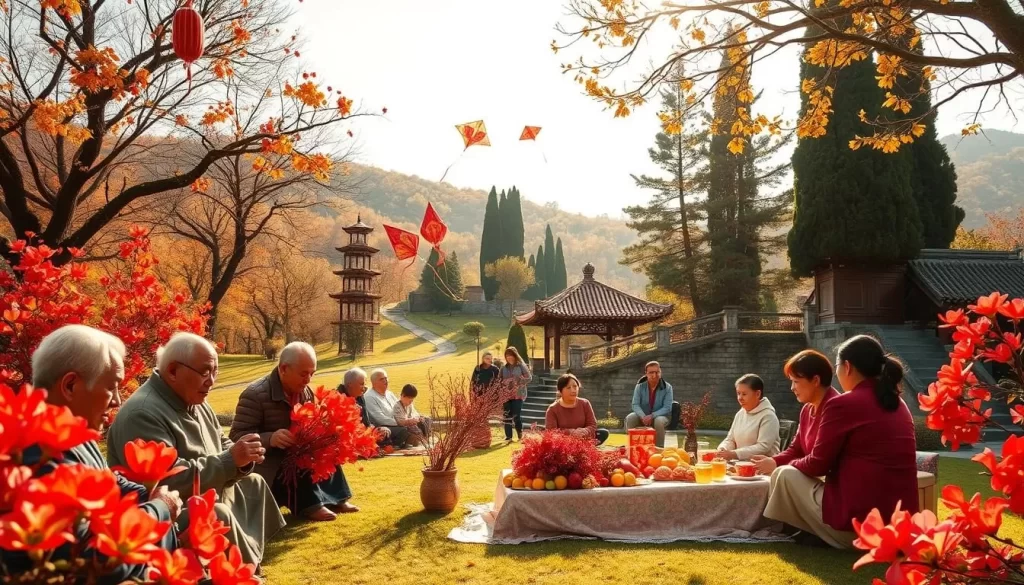
One of the most iconic traditions is mountain climbing, a practice believed to promote health and longevity. Families and friends gather to hike scenic trails, enjoying the fresh air and vibrant landscapes of the spring season. This activity not only strengthens bonds but also connects participants to the natural heritage of their region.
Chrysanthemums, which bloom during this time, play a central role in the celebrations. Known as the Chrysanthemum Month, this period symbolizes resilience and longevity. Drinking chrysanthemum wine, believed to have health benefits, is another cherished tradition. These customs highlight the festival’s focus on well-being and respect for nature.
The Double Ninth Festival also emphasizes the importance of honoring the elderly. In 1989, the Chinese government designated this day as “Elderly Day,” encouraging respect and care for senior citizens. This modern adaptation underscores the festival’s role in preserving cultural heritage while addressing contemporary societal values.
Here’s a quick overview of the festival’s key activities:
| Activity | Significance |
|---|---|
| Mountain Climbing | Promotes health and longevity |
| Chrysanthemum Appreciation | Symbolizes resilience and beauty |
| Drinking Chrysanthemum Wine | Believed to have health benefits |
| Family Gatherings | Strengthens bonds and honors elders |
Whether you’re climbing a mountain or enjoying chrysanthemum tea, the Double Ninth Festival offers a meaningful way to connect with nature and celebrate your heritage. To learn more about its rich traditions, explore the Double Ninth Festival traditions.
Hungry Ghost Festival in Fujian: Respecting the Departed
Immerse yourself in the solemn yet fascinating traditions of the Hungry Ghost Festival. This event, celebrated on the 15th day of the seventh lunar month, is a time to honor ancestral spirits and protect the living from misfortune. It’s a meaningful way to connect with cultural heritage and show respect for those who came before.
Rituals and Offerings to Ward Off Misfortune
During the festival, families make offerings to appease roaming spirits. These include burning paper money and presenting rice, wine, and meat. These rituals are believed to bring peace to the departed and safeguard households from harm.
One unique activity involves the ceremonial procession, which starts at 3 PM and lasts for three days. Participants often incorporate dragon-themed decorations, symbolizing strength and protection. This blend of tradition and creativity adds a vibrant touch to the observance.
Public ceremonies are another highlight, featuring performances like Chaozhou shadow plays. These events foster a sense of community and ensure the festival’s traditions are passed down through generations.
| Ritual | Purpose |
|---|---|
| Burning Paper Money | Provide resources for spirits |
| Offering Rice and Wine | Ensure spirits are nourished |
| Dragon Decorations | Symbolize protection and strength |
For a deeper understanding of these traditions, explore the Hungry Ghost Festival traditions. This festival is a powerful reminder of the enduring connection between the living and the departed.
National Day Festivities in Fujian: Golden Week Experiences
Golden Week is a time of national pride and celebration, bringing communities together in a burst of color and energy. This eight-day holiday, aligning with the Mid-Autumn Festival, is marked by grand fireworks displays, concerts, and cultural performances. It’s a part of modern traditions that welcomes both locals and visitors to join in the festivities.
Local governments play a key role in organizing events that cater to tourists and residents alike. From guided tours to interactive activities, there’s something for everyone. In Fuzhou City, 232 cultural activities were planned, including holiday-themed events and exhibitions. These efforts create a festive atmosphere that feels like home for all who participate.
Community events are a highlight of Golden Week, offering a warm and inclusive environment. Families gather to enjoy traditional meals, while public spaces host performances and parades. These celebrations are an essential part of the holiday, fostering a sense of unity and belonging.
For tourists, Golden Week is an opportunity to explore the region’s rich culture. Many opt for family or group tours, which provide a deeper understanding of local traditions. The railway network is expected to handle 175 million passenger trips during this period, reflecting the high demand for travel.
Indoor and outdoor festivities ensure there’s no shortage of activities. Whether you’re attending a concert or hiking scenic trails, the holiday offers a perfect blend of relaxation and excitement. These experiences make Golden Week a cherished part of the year for many.
To make the most of your trip, consider Golden Week travel tips. These insights can help you navigate the crowds and discover hidden gems. Whether you’re a tourist or a local, Golden Week is a time to celebrate and create lasting memories.
Seasonal Food and Culinary Celebrations
Dive into the rich flavors of Min Cuisine, where every dish tells a story of tradition and innovation. This culinary tradition, one of China’s top eight, is a celebration of fresh ingredients and time-honored techniques. From the bustling street markets to family kitchens, the food culture here is a feast for the senses.
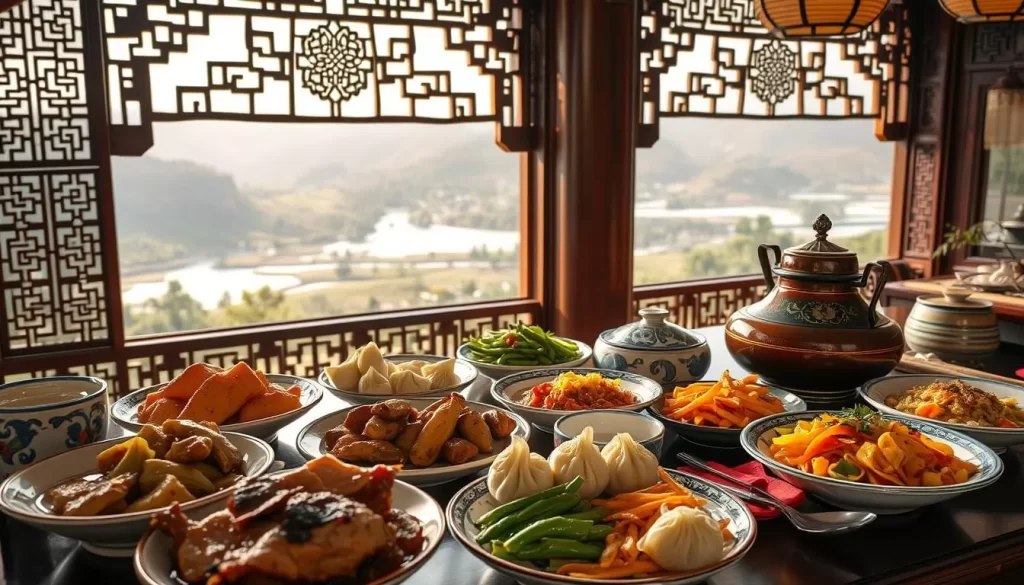
Min Cuisine Must-Try Dishes
Min Cuisine is renowned for its use of seasonal ingredients sourced from the land and sea. Dishes like Buddha Jumps Over the Wall, a luxurious soup, and Oyster Omelette showcase the region’s culinary creativity. These recipes, often passed down through generations, highlight the importance of family and heritage.
One standout dish is the Bian Rou, a type of wonton filled with pork and shrimp. Its delicate flavors and intricate preparation reflect the artistry of Min Cuisine. Another must-try is the Fotiaoqiang, a complex stew that combines seafood, poultry, and mushrooms, symbolizing abundance and prosperity.
Fresh Seafood and Traditional Flavors
The coastal location ensures an abundance of fresh seafood, a cornerstone of Min Cuisine. Dishes like steamed fish and stir-fried clams are staples, often paired with locally grown vegetables and fragrant herbs. The fusion of land-based produce and ocean treasures creates a unique culinary experience.
Street food is another highlight, with vendors offering everything from savory pancakes to sweet rice cakes. The street markets are a vibrant hub of activity, where you can sample these delights while soaking in the local culture. For a deeper dive into these traditions, explore the Lunar New Year food traditions.
Food festivals are a great way to experience these flavors. Events like the Spring Festival feature special dishes and cooking demonstrations, offering a glimpse into the region’s rich culinary heritage. Whether you’re dining in a family-run restaurant or exploring a bustling street market, every bite is a celebration of tradition and taste.
Cultural Performances and Street Festivities in Fujian
Immerse yourself in the vibrant energy of cultural performances that bring streets to life. These events are a feast for the senses, blending music, dance, and storytelling into unforgettable experiences. Whether you’re watching a lion dance or listening to folk tunes, every moment celebrates the creativity of local communities.
Drum and Lion Dance Extravaganzas
One of the most captivating sights is the drum and lion dance performances. These shows are a riot of color and sound, with performers moving in perfect harmony to the beat of traditional drums. The lion dance, often performed during festivals, symbolizes good luck and prosperity.
These performances are usually held outdoors, taking advantage of the pleasant weather and scenic backdrops. The natural beauty of the surroundings enhances the experience, making it a must-see for visitors. Many performances also incorporate rice-based props, adding a unique cultural touch.
Local Music and Folk Performances
Traditional music and folk performances are another highlight. Local artists use instruments like the erhu and pipa to tell stories of the region’s history and culture. These performances often take place in open-air venues, allowing you to enjoy the music under the stars.
Many folk performances also include elements of nature, such as costumes inspired by local flora and fauna. These acts showcase the deep connection between the community and their environment. It’s a beautiful way to experience the region’s cultural heritage.
Here’s a quick guide to some of the most popular performances:
| Performance | Highlights |
|---|---|
| Lion Dance | Colorful costumes, rhythmic drumming, and symbolic gestures |
| Folk Music | Traditional instruments, storytelling, and outdoor venues |
| Drum Performances | Energetic beats, synchronized movements, and festive atmosphere |
These performances are more than just entertainment—they’re a celebration of the region’s rich traditions and creative spirit. Whether you’re watching a lion dance or listening to folk music, you’ll leave with a deeper appreciation for the culture and its connection to nature.
Exploring Fujian’s Temple and Heritage Festivals
Step into a world where ancient temples and sacred spaces come alive with vibrant celebrations. These festivals are a beautiful blend of religious observance and cultural performance, offering a unique way to connect with the region’s rich heritage.
Kaiyuan Temple Celebrations
Kaiyuan Temple stands as a cornerstone of local Buddhist traditions. Its annual celebrations are a sight to behold, featuring traditional rituals, art displays, and guided tours. These events bring the community together, honoring the temple’s historical significance.
During the festivities, the temple grounds transform into a lively park, filled with music, dance, and storytelling. Visitors can explore ancient structures and learn about the sacred history that has shaped the region for centuries.
Ancient Traditions in Sacred Spaces
Heritage festivals held in sacred spaces offer a glimpse into the beginning of local traditions. These events often include ceremonial dishes and offerings, symbolizing respect and gratitude. For example, rice cakes and tea are commonly presented as part of the rituals.
These festivals also feature cultural performances, blending religious practices with artistic expression. From drum dances to folk music, every element highlights the deep connection between the community and its spiritual roots.
Whether you’re exploring Kaiyuan Temple or other sacred sites, these celebrations provide a meaningful way to experience the region’s cultural soul. They remind us of the enduring power of tradition and the importance of preserving our shared heritage.
Unique Regional and Local Village Festivals
Step into the heart of rural charm with festivals that celebrate the unique spirit of village life. These events are deeply rooted in tradition, offering a glimpse into the customs and artistry of local communities. From historic Tulou structures to scenic mountain and coastal settings, each festival creates a distinct atmosphere that’s both captivating and authentic.
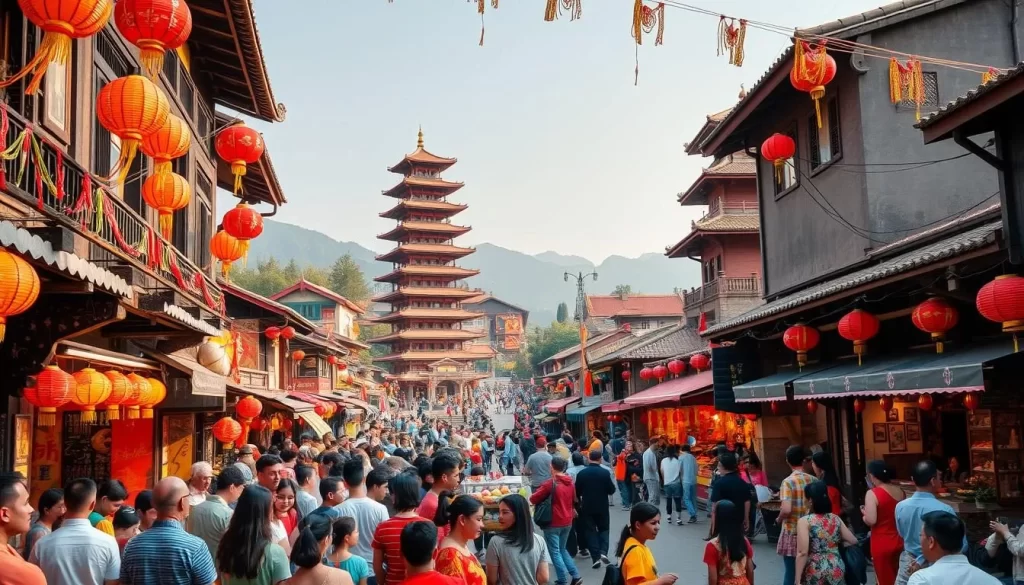
Tulou Cultural Festivities in the Villages
Village festivals centered around Tulou structures are a highlight of rural celebrations. These historic buildings, known for their unique architecture, serve as the backdrop for vibrant gatherings. Local artisans showcase their crafts, from intricate wood carvings to handmade textiles, while communal feasts bring everyone together.
Ritual sacrifices and offerings play a significant role in these festivities. Families honor their ancestors with traditional ceremonies, creating a sense of continuity and respect. The natural light of the sun enhances the beauty of these events, casting a warm glow over the celebrations.
Mountain and Coastal Celebrations
In mountainous areas, festivals often include outdoor activities like hiking and traditional dances. The fresh air and scenic views add to the festive atmosphere, making these events a favorite among visitors. Coastal villages, on the other hand, celebrate with seafood feasts and water rituals, reflecting their connection to the sea.
These celebrations differ from urban festivals, offering a more intimate and community-focused experience. The role of sacrifice is evident here too, with offerings made to ensure prosperity and safety. The setting sun often marks the end of the day’s activities, leaving behind memories of joy and togetherness.
| Festival Type | Key Features |
|---|---|
| Tulou Festivals | Historic settings, local crafts, communal feasts |
| Mountain Festivals | Outdoor activities, traditional dances, scenic views |
| Coastal Festivals | Seafood feasts, water rituals, sunset celebrations |
These village festivals are a testament to the enduring power of tradition and community. Whether you’re exploring a Tulou structure or enjoying a coastal feast, you’ll find a unique atmosphere that’s hard to forget. To learn more about these cultural celebrations, visit this link.
Conclusion
From lantern-lit streets to heartfelt traditions, every celebration here tells a story of community and heritage. Each event offers a unique window into the region’s rich history, blending ancient customs with modern joy. Whether it’s the lively drum dances or the serene temple ceremonies, these festivals bring people together in a kind of magic that’s hard to forget.
These celebrations are more than just events—they’re a way to connect with the soul of the house of culture. From family reunions to communal feasts, every moment is filled with warmth and meaning. You’ll find yourself immersed in a world where tradition meets creativity, and every detail tells a story.
If you’re looking for an unforgettable cultural journey, these festivals are a must-experience. Each one has its own kind of charm, inviting you to explore the vibrant blend of history and modernity. Plan your trip and discover the magic that makes every celebration a house of memories. To learn more, visit this link.
The above is subject to change.
Check back often to TRAVEL.COM for the latest travel tips and deals.
